Video Game History Comes Alive with Dynamite's Art of Atari
Oct 20, 2016
While not the only company to offer home consoles and games, Atari was by far one of the most iconic, with its stylized three-line logo emblazoned on consoles, arcade games, and merchandise. Although the games themselves were fairly simple in their aesthetics – the 8-bit graphics available at the time meant most games were composed of colored squares – the design of the systems and the art on the packaging were bold and eye-catching.
Graphic designer and Museum of Video Game Art executive director Tim Lapetino pays tribute to the pioneering company and the games it produced with the hardcover retrospective Art of Atari , published by Dynamite Entertainment. Featuring original art from the game packages, arcades, and games themselves, as well as the designs of the consoles and interviews with the artists, the book offers an in-depth look at the beginning of an entertainment industry that is now a major part of modern culture.
PREVIEWSworld spoke with Lapetino about the book, his experiences with Atari, and what it is that keeps the art relevant today.
Art of Atari (JUL161467) is available at your local comic shop on October 26th!
PREVIEWSworld: What is the scope of this book? How much of the Atari output does it cover?
Tim Lapetino: My approach on this book was two-fold: First, I wanted to include as much of Atari’s great art and design as possible, because I wanted it to represent the breadth and depth of incredible creative work that orbited their games and consoles. I also know that anyone who grew up with Atari will have games that they’re intimately tied to, and I wanted to try and include as much as possible for fans and casual readers. I also understand the collector’s impulse towards completeness, so we tried to be as thorough as possible, including as much as we could in the book. On the flip side, I was intent on really curating just the very best work – the iconic and well-crafted pieces, the great art that has aged well, and those that stand out from a technical standpoint. There definitely were pieces that didn’t make that cut, but at the end of the day, the book still represents the best of the best. With everything included, we packed all 352 pages!
Finally, we were limited practically by what we could acquire – in terms of art and information. If we had additional time – maybe years -- we’d probably uncover even more, but the book is an excellent representation of the best of Atari’s art and design, with most of it centered around the 2600 because it was so popular, iconic, and ubiquitous. The 5200 and 7800 are represented as well, but for the most part, the book generally orbits the 2600. Some of the later consoles are represented too, especially when digging into the industrial design.
PREVIEWSworld: Besides the craft involved and the iconic status of Atari, what makes this art so special?
Tim Lapetino: The bottom line is that it was done very well. Atari hired some super-talented, creative folks, both freelance and in-house, and they produced work that really elevated the game experience. The artwork informed your play because the graphics were so simple. It wasn’t hard to get lost in these electronic worlds when you had mental, creative guides in the form of art that helped flesh them out in your mind.
Also, the illustration and design were a product of that particular time period. It’s a privilege to go back to the late ‘70s and ‘80s and see the creative approach and way that design and marketing have evolved. That was the tail end of illustration’s heyday as a force in design and marketing, and it’s important to capture and appreciate the work that came out of that era. Also, Atari was a pioneer in many ways, and games are still fundamentally marketed and created in a similar way to how Atari did it back in the late ‘70s. Some of the media have changed, but Atari set the standard for how to communicate these electronics visions.
PREVIEWSworld: Did you play Atari when you were younger? What memories or experiences stand out?
Tim Lapetino: I certainly did, and it clearly left an impression! I remember sitting in the bedroom I shared with one of my brothers, as we hooked up our console for the first time. It was mesmerizing – the onslaught of never-ending waves of Space Invaders, or the frenzy of bombs dropping in Missile Command – and sort of intoxicating. But four-player Warlords tournaments were the best, as we’d trash talk our way through round after round, with little alliances being formed in the moment as you try and break through the castles of the other three knights at the corners of the screen.
What kind of research did you do for this book? As the Museum of Video Game Art’s executive director, how much of the original art did you already have access to, and how much did you have to track down?
The biggest tasks were tracking down artists/designers and artwork. Since Atari didn’t publicly credit its creatives, I started with examining the boxes and materials published, to get a sense of the names we did know via signatures. Then, the Internet was a huge help in finding some of those folks once I figured out who they were. It became a bit like dominoes, where one artist would introduce me to three others, and they would recall and connect with even more folks.
I ended up going back to quite a few archived primary sources, like old Atari newsletters, paperwork and the like. It felt like cultural archaeology, and that sense of discovery kept me going during the dry times, because you never knew what would get unearthed. A quick example – one of the designers at Atari introduced me to the photographer who shot a lot of Atari’s flat artwork for reproduction. After connecting with him, he mentioned he might have “a few” 4x5 transparencies of the work in his attic. That “few” was actually 40 pieces that were a crucial core of the final book! It was some of the most well-known Atari artwork, and filled many holes I had at the time. It was unexpected, and I remember doing a little dance when I got the package in the mail. You just can’t predict stuff like that.
As for original art, sadly, much of it has been lost or destroyed, and what is left is in the hands of private collectors. Corporate archives were practically unheard of during Atari’s era, and very few companies maintained original art and pieces that today we’d consider valuable intellectual property. The fact that Atari moved, closed locations, and was sold and separated at different times didn’t help – many pieces were misplaced or tossed in the trash. Some heroic collectors and former employees literally jumped into dumpsters to rescue some of it, but that was still a fraction of the whole. One of the collectors I met saved huge filing cabinets full of art and production pieces, and later all of that ended up in a museum’s collection, and we had access to it there – at the Strong Museum of Play’s International Center for the History of Electronic Games.
The MOVA archives contain more than a hundred slides, negatives and transparencies related to Atari, but no original art. So, we leaned heavily on 4x5 transparencies, which yield amazing scans that are able to be blown up to very large proportions, since they are photographic and so dense with visual information. In addition to a few of the artists who were able to hang onto original pieces, I was also able to connect with some art collectors who generously allowed us to photograph their art, and that really filled in a lot of gaps. But it didn’t account for everything – in the book, the places where we were unable to track down high-res art or originals, we photographed actual boxes, and I think that works well, giving us a great sample of the physical aspect of how these pieces were originally presented.
PREVIEWSworld: Was there anything especially interesting or surprising that came across while putting this together?
Tim Lapetino: In the last few weeks leading up to our final deadlines, by sheer coincidence, I stumbled upon a friend of a friend who had acquired some original logo concepts by George Opperman, Atari’s first creative director and the man responsible for the iconic Atari logo. Oppermann has been all-but-ignored by the design community, partially because he worked in the video game industry, which was less “serious,” and because he passed away in the mid-‘80s. Not a lot has been written about him, so I set about highlighting the man who created one of the most indelible pieces of logo design of the 20th century, and who was such a driving creative force at Atari. Needless to say, being able to include his early Atari logo concepts was a treat, and really adds to the story I wanted to tell about the man.
PREVIEWSworld: Do you have a favorite game or piece of art from Atari?
Tim Lapetino: One of my favorite pieces of art in the book is a piece by Cliff Spohn, which was done for a catalog and promotional use. It’s a montage centered around a wizard, with representations of many different games coming out of a TV screen while they all flow together. It’s complex, beautiful, and is impeccably designed. It’s pretty exciting to be able to run that piece so much larger in the book than it originally appeared in a little catalog.
PREVIEWSworld: How do you feel the Atari games stand up in both the video game and greater pop culture worlds?
Tim Lapetino: I think Atari’s games, at their best, represent that great idea of “simple to learn, difficult to master.” That concept has come back into fashion in the form of mobile gaming, and Atari’s original work could be well-positioned to fit into that category today. I think it’s a challenge for gamers today to appreciate the amount of creativity and innovation required to make that first generation of home video games a reality, but it’s just like understanding history – where we’ve come from dictates where we’re going, and I hope some of that comes across in the story I’ve told in Art of Atari.
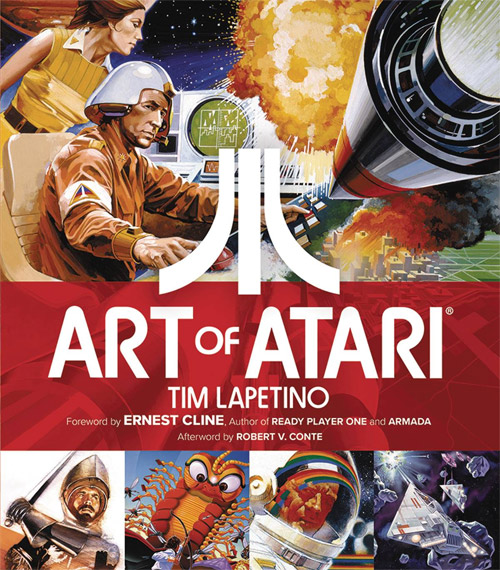
ART OF ATARI HC
Item Code: JUL161467
SRP: $39.99
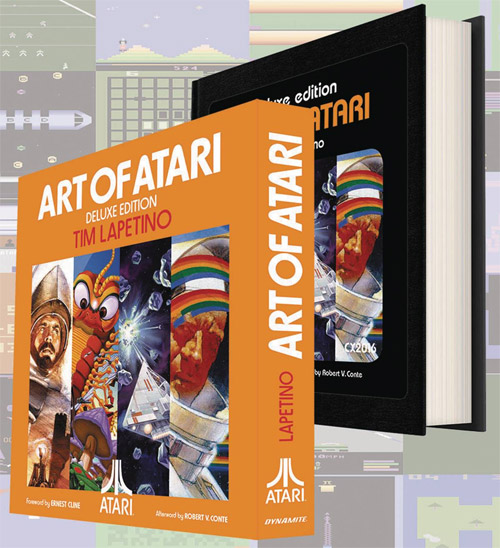
ART OF ATARI HC DLX ED
Item Code: JUL161468
SRP: $99.99
Take a look inside Dynamite's Art of Atari below:
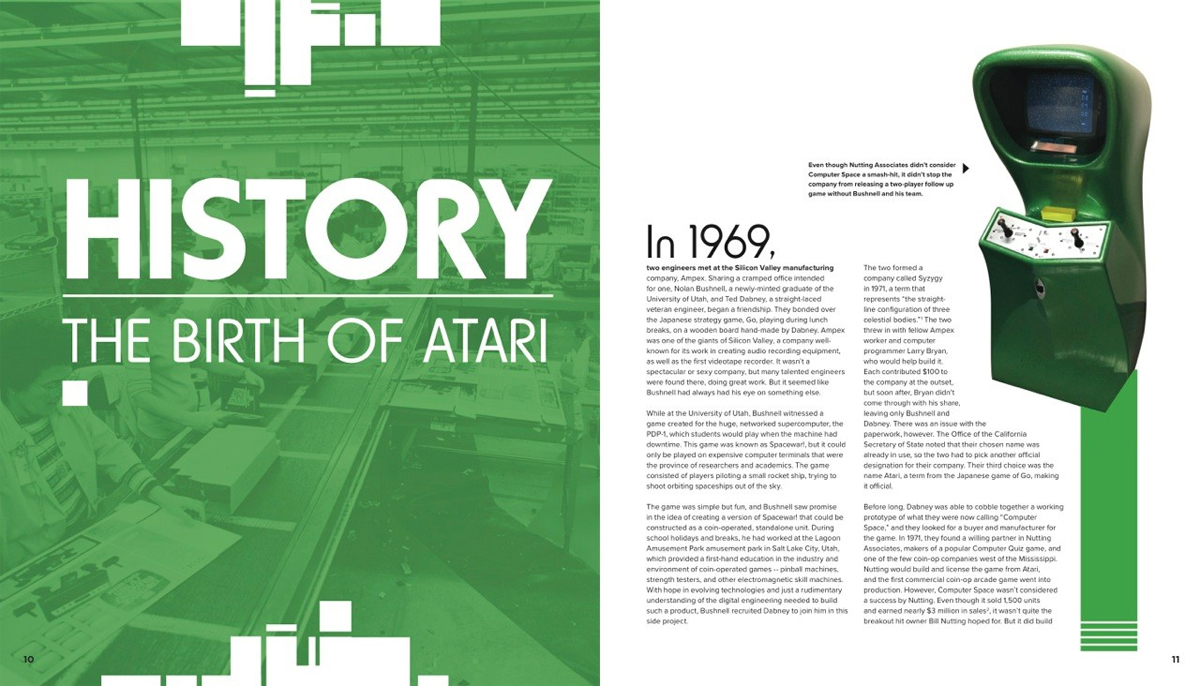 |
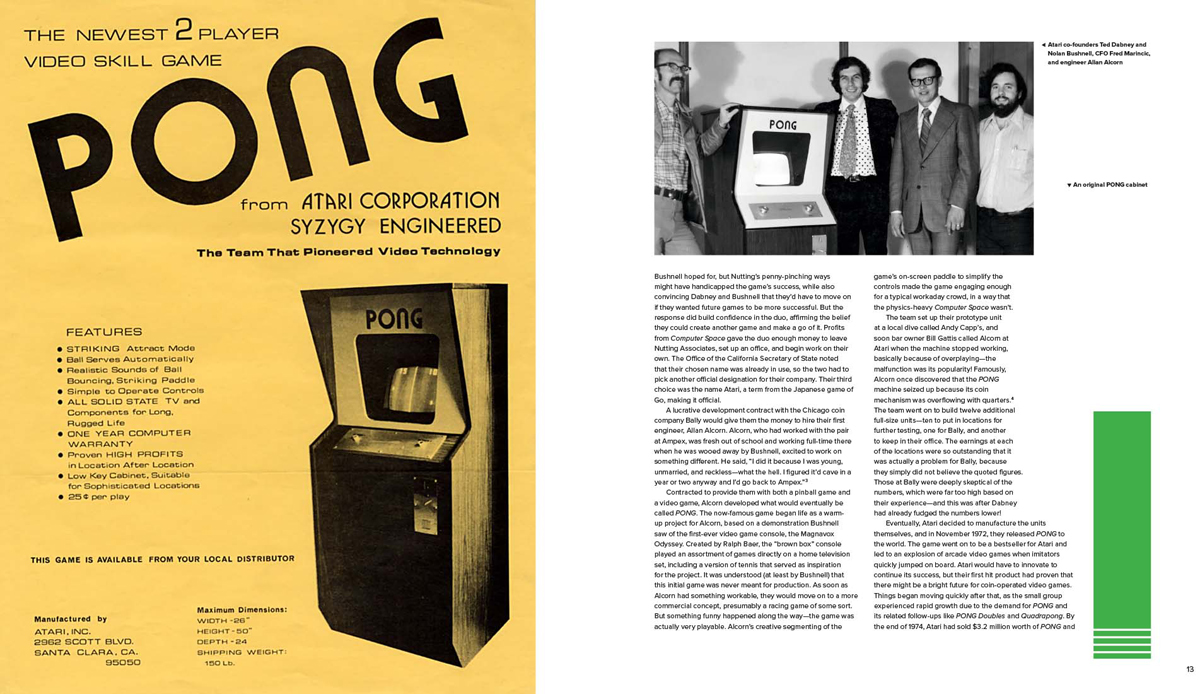 |
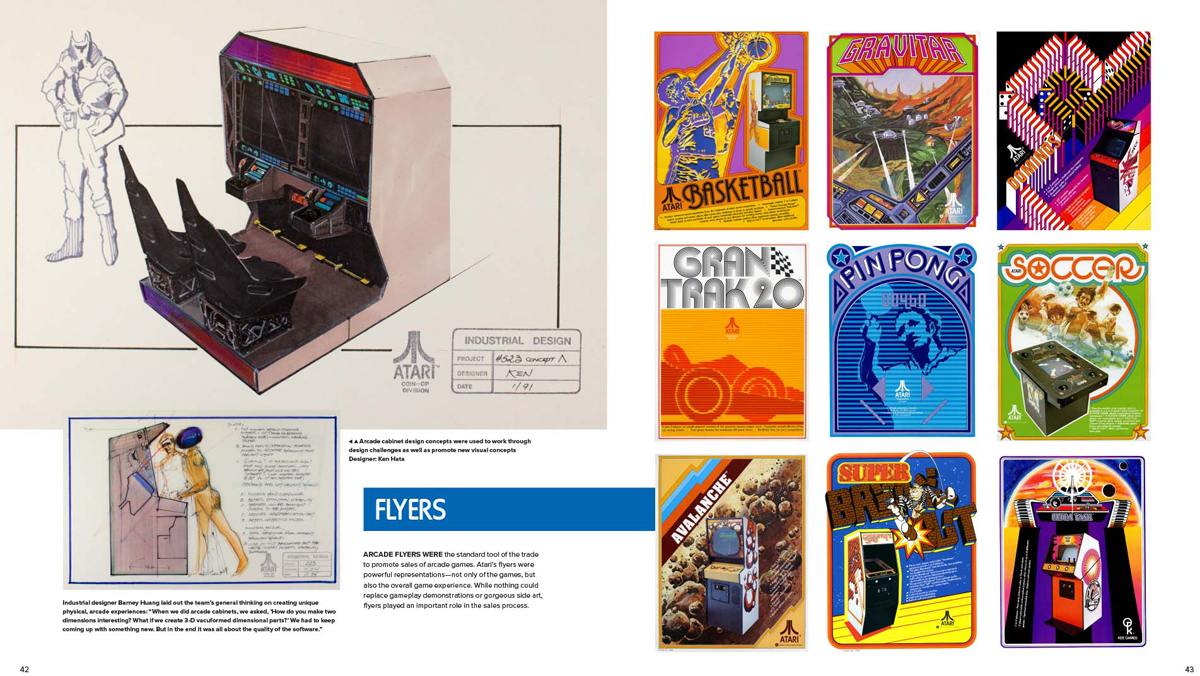 |
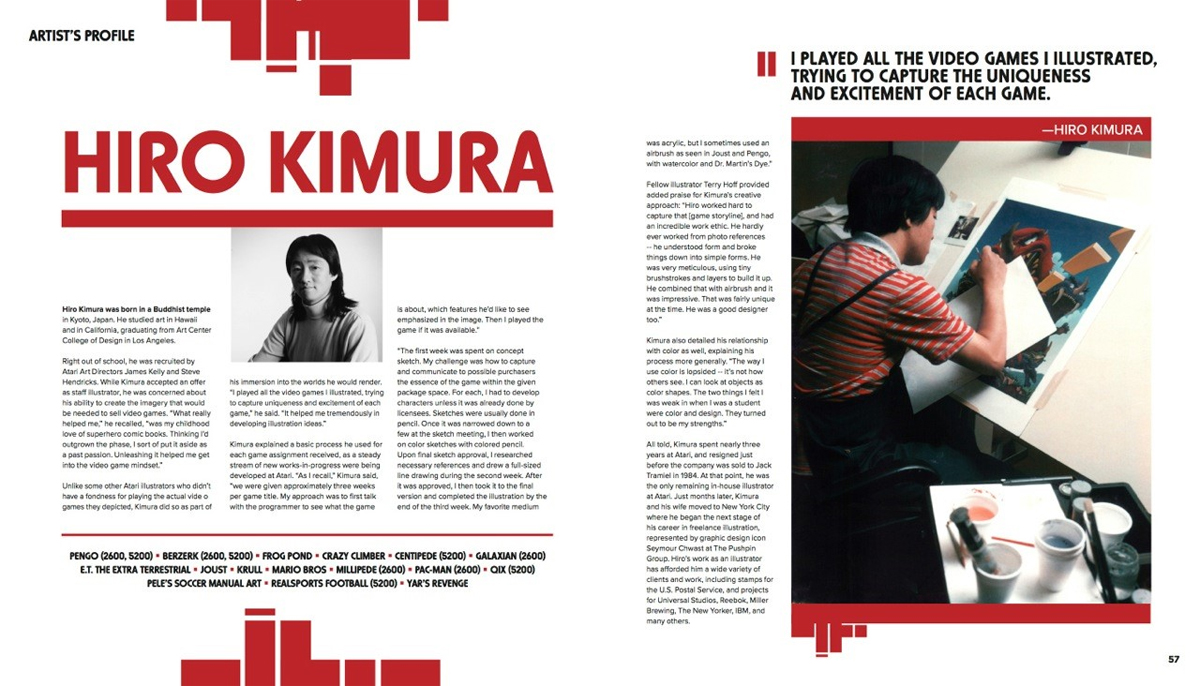 |
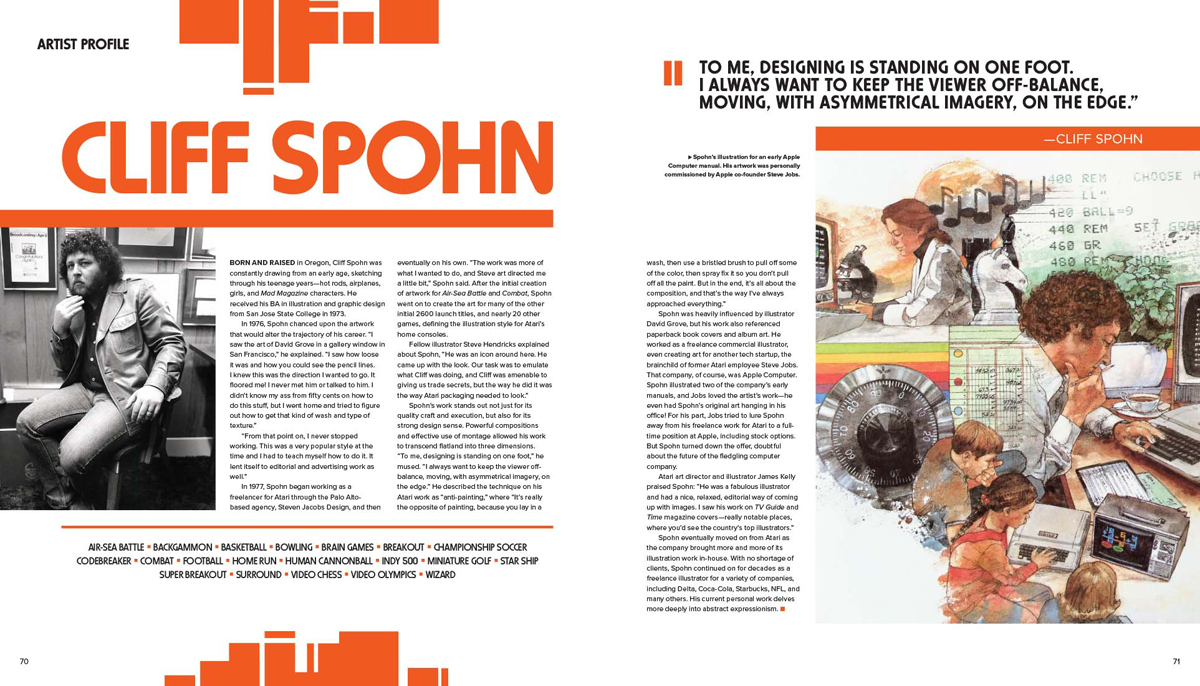 |
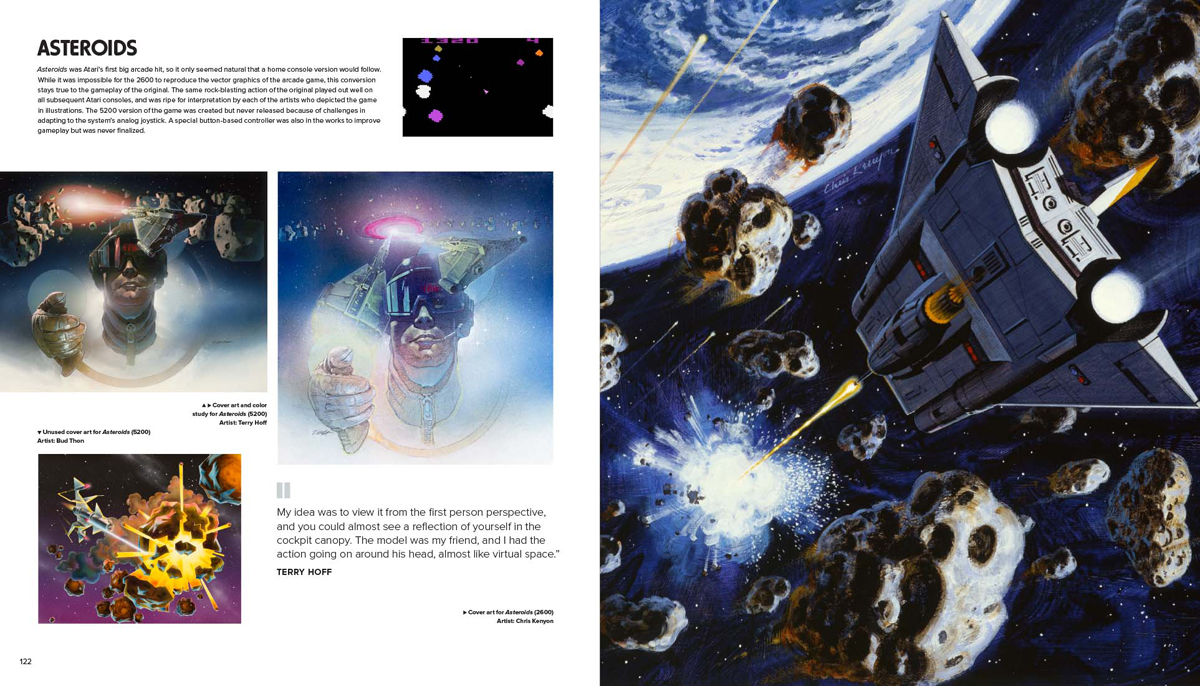 |
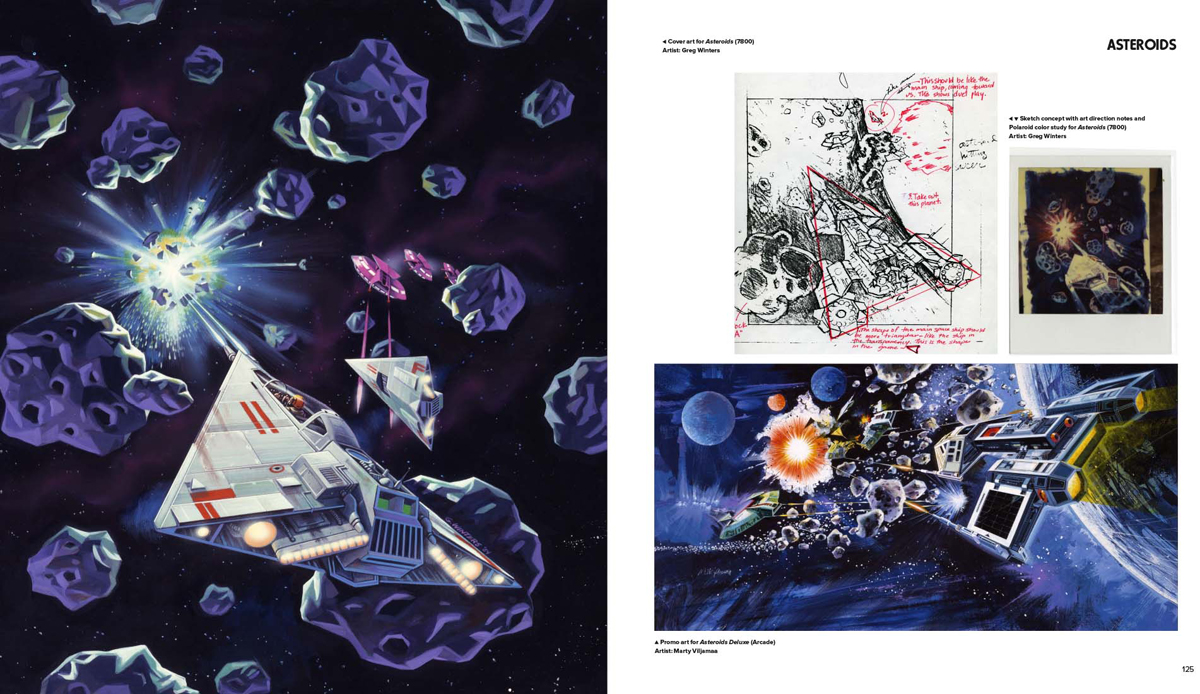 |
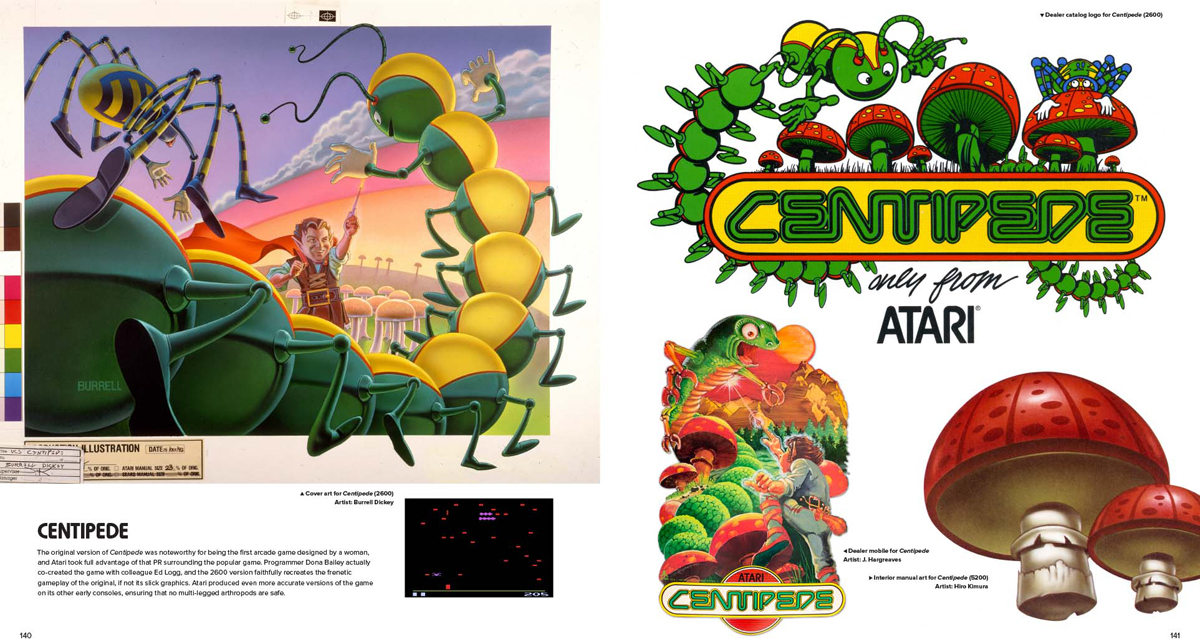 |
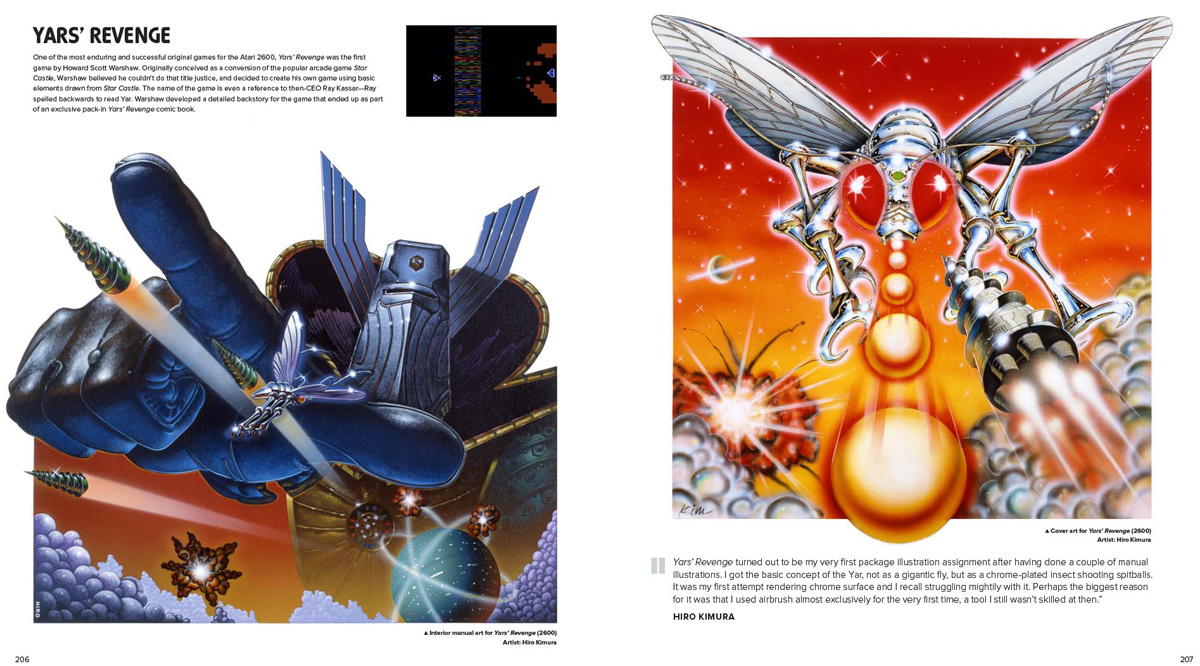 |
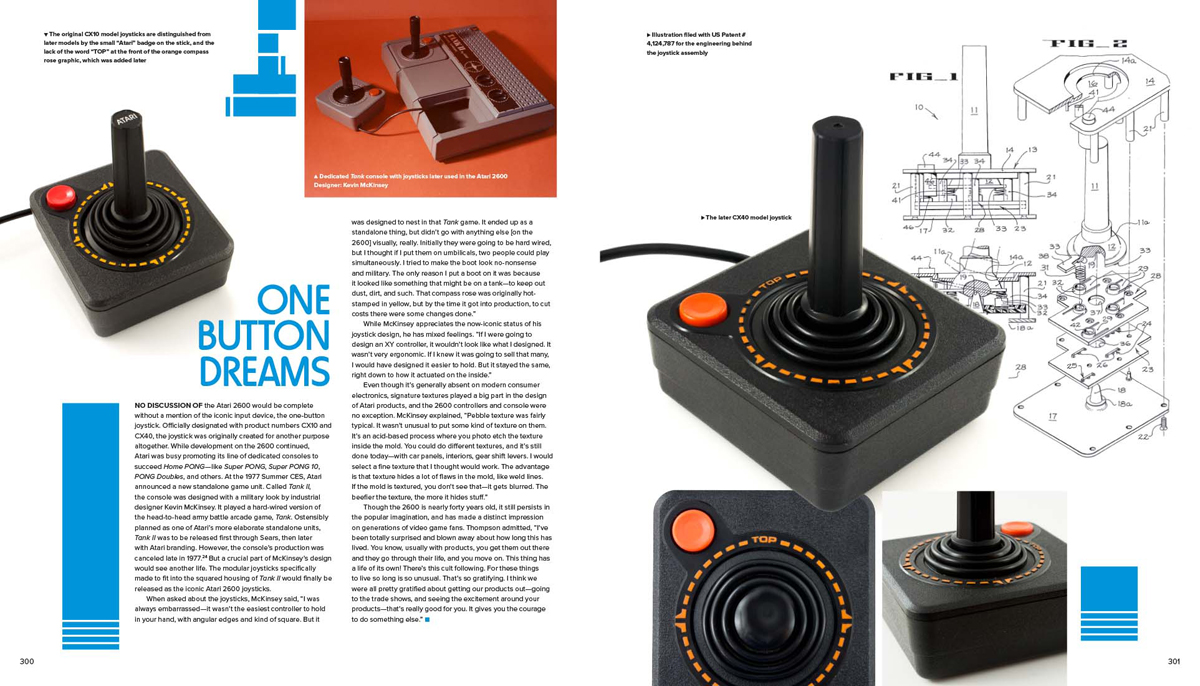 |




